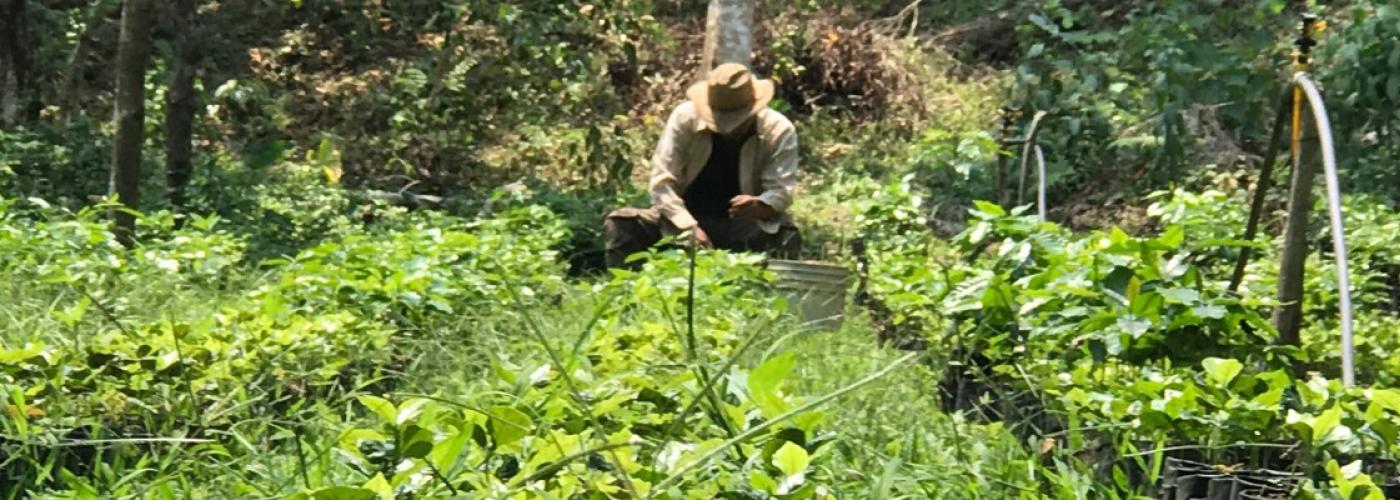How USAID Brought Co-Creation Online in the Era of Social Distancing: Part I
Image

By Emily Langhorne, INVEST Communications Specialist
Mexico’s forests are hubs of historical, cultural, and environmental riches. For centuries, the Mayans built their extraordinary civilizations there. They house jaguars, macaws, monkeys, tapirs, and many other animals. Unfortunately, they are also disappearing at an alarming rate. In the last 20 years, Mexico has lost between 580 and 1,160 square miles of forest each year. In the last three years, that number has averaged approximately 1,080 square miles — an area larger than Mexico City. This rapid deforestation leaves harmful environmental, social, and economic effects in its wake.
Agricultural expansion, livestock production, illegal logging, and urbanization are the primary drivers of Mexico’s deforestation. Stopping this land degradation requires systemic change: many people and organizations must help the local communities and producers responsible for managing the land overcome the financial barriers that discourage them from implementing sustainable practices.
USAID’s Mission in Mexico understands that the most effective and long-term solutions should be informed by a variety of organizations and people. USAID Mexico decided that using a co-creation process — a participatory approach to problem-solving that brings people together to design a solution with mutually shared benefits and value — through a Broad Agency Announcement (BAA) — was the best strategy to identify viable solutions.
“Using the BAA and incorporating co-creation are very humbling experiences for USAID,” says Dr. Charles Kiamie III, Deputy Director of USAID’s Office of Local Sustainability. “We are acknowledging that we don’t have enough information on a particular issue and actively seek public engagement to identify solutions: ‘We have a problem with X, what would you do about it?’ The Agency’s use of the BAA with co-creation has been a real sea change in the way that people think about identifying and solving vexing development challenges.’”
Because it allows for free-flowing conversations and debates among participants with different experience and expertise, multi-stakeholder co-creation often produces unique solutions.
“When seeking sustainable solutions, it’s not effective to work with only one or two institutions. The solution must involve the whole system,” says Elizabeth Warfield, former Mission Director of USAID Mexico. “The Mexico Mission, through its work building local alliances, already had extensive experience working in systemic thinking. For this problem, we knew we needed a solution that would stick in terms of system change and continue to produce results locally after the activity ends. Co-creation is one of the ideal ways to bring in new partners, incorporate local systems, and operationalize systems thinking.”
When Warfield and her staff approached Kiamie about using the BAA and multi-stakeholder co-creation to develop systemic solutions for implementing sustainable land management throughout Mexico, he agreed it was “an ideal situation to use the BAA and co-creation. The Mission faced a complex problem with no clear solutions,” says Kiamie. The BAA with multi-stakeholder co-creation is great for these kinds of complex challenges with no clear solution. That’s the type of problem we were looking at with sustainable land management in Mexico, and USAID’s convening power could bring together actors to brainstorm joint solutions.”
Through the co-creation, USAID/Mexico aimed to work alongside the investment, business, and natural resource management communities to design blended finance strategies for catalyzing investments that reduce deforestation and forest degradation, improve land management practices, and benefit the socio-economic development and well-being of rural communities. In hosting the co-creation, Mexico Mission partnered with USAID INVEST — an initiative that mobilizes private capital for better development results.
“INVEST brought to the team a level of financial expertise: they helped us think through blended finance and all its iterations and make sure that all that technical information was taken into account throughout the co-creation,” says Warfield.
For a co-creation, organizations submit expressions of interest (EOIs) rather than traditional proposals. In an EOI, organizations briefly outline a method for addressing the problem and illustrate their institutional capacity instead of putting forward a detailed solution. The organizations with the most promising EOIs are invited to participate in a co-creation workshop during which they engage in design-thinking activities to move beyond their initial EOI and develop new solutions together.
On February 26, 2020, USAID Mexico put out a request for EOIs. With support from INVEST, USAID/Mexico evaluated EOIs received from multiple organizations and invited representatives from the most promising submissions to a co-creation workshop in Mexico City. USAID/Mexico scheduled the workshop for the last week of April in order to have a viable solution identified and awarded by July.
Then, the coronavirus began spreading rapidly, and the pandemic brought the world to a sudden halt.
“With the virus spreading, travel bans being enacted, and countries facing lockdowns, the immediate thought was we’ll have to cancel co-creation and use a traditional proposal process for hiring an implementer,” says Warfield. “I wasn’t too excited about that because I knew it wouldn’t get us the systemic solution we needed, so I challenged the team to figure out how we could do it virtually.”
“Given the unknowns at the time about COVID-19, its progression, and the timeline for re-opening, the team agreed that we should attempt to take the co-creation virtual, which left us about four to six weeks to pivot and bring the entire thing online by the end of April,” says Lauren Zinser, USAID INVEST Activity Coordinator.
In their efforts to find solutions for the problem of deforestation and land degradation in Mexico, USAID/Mexico and INVEST found themselves facing another challenge: How to facilitate USAID’s first virtual co-creation?

